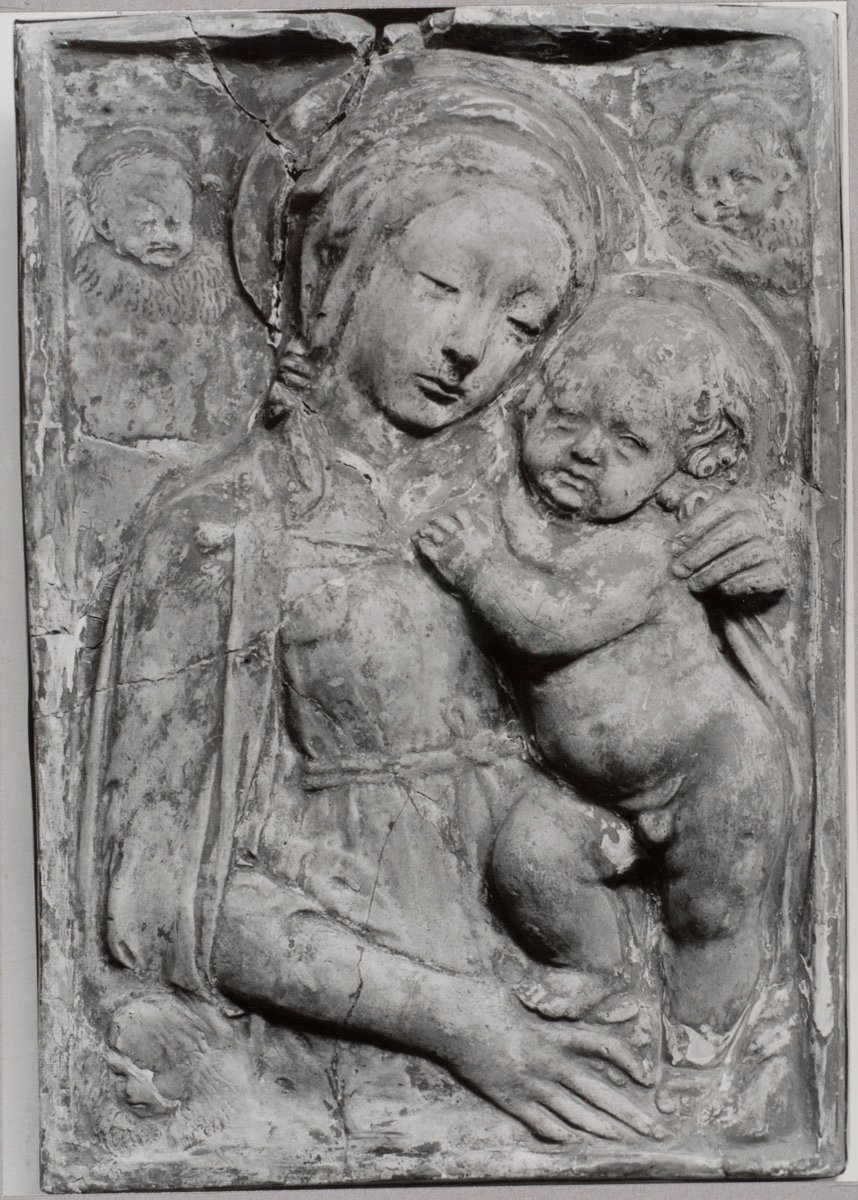
Virgin and Child
Sculptures
| Artist | |
|---|---|
| Date | ca. 1390 (original), 1907 (cast) |
| Object type | plaster cast |
| Medium, technique | plaster cast |
| Dimensions | 114 cm |
| Inventory number | Rg.32 |
| Collection | Sculptures |
| On view | National Museum Conservation and Storage Centre, Visible Storage |
The aristocratically slender and elegantly dressed figure of the knight standing in contrapposto decorated the façade of the house at 2 Halbwachsengasse in Nuremberg until 1881, when it was purchased by the Berlin museum. The depicted, who once held the fragment of a shield in his left hand and a spear in his right, was initially identified as Charles IV, Holy Roman emperor (1355–1378), who played an important role in the flourishing of Nuremberg. However, recent research has linked the statue to his son, Wenceslaus IV, born in Nuremberg, who was crowned king of Bohemia in 1363. Since the mode of the depiction of the Nuremberg statue follows that of the fourteenth-century statue of Saint Wenceslaus of Saint Vitus Cathedral in Prague, we are probably looking at a dual portrait. The Nuremberg statue of Saint Wenceslaus, a Bohemian martyr who lived in the tenth century, is also the “crypto-portrait”, or hidden representation of King Wenceslaus IV. The statue’s original destination was presumably Saint Moritz Chapel in Nuremberg, destroyed in 1944, whose walls were decorated by a cycle ordered by Charles IV, including a depiction of the birth and baptism of Wenceslaus, heir to the throne.
This record is subject to revision due to ongoing research.